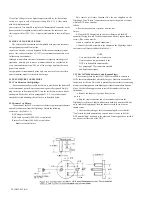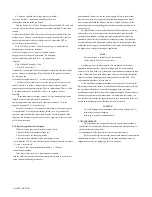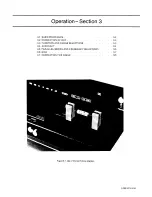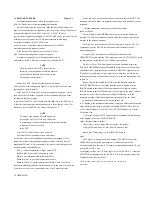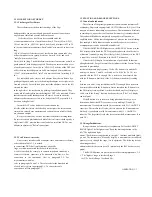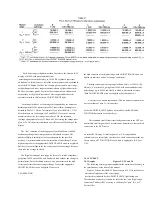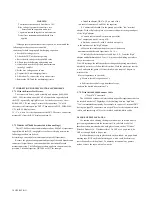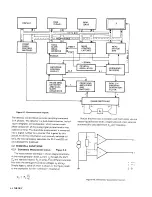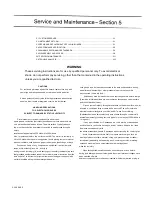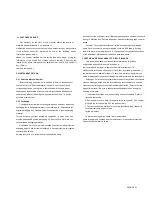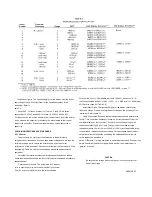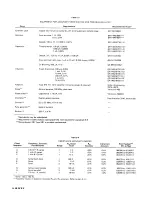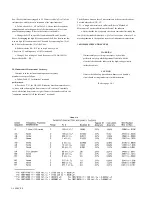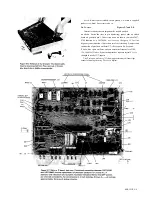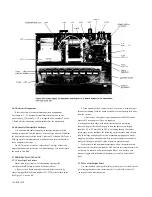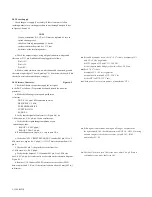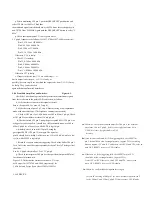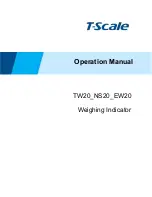
5.1 CUSTOMERSERVICE. .................................................................................................................... 5-1
5.2 INSTRUMENT RETURN.................................................................................................................. 5-1
5.3 REPAIR AND REPLACEMENT OF PLUG-IN BOARDS................................................................. 5-1
5.4 PERFORMANCE VERIFICATION................................................................................................... 5-2
5.5 MINIMUM-PERFORMANCE STANDARDS. ................................................................................... 5-2
5.6 DISASSEMBLY AND ACCESS. ...................................................................................................... 5-9
507 PERIODIC MAINTENANCE............................................................................................................ 5-11
5.8 TROUBLE ANALYSIS...................................................................................................................... 5-13
WARNING
These servicing instructions are for use by qualified personnel only. To avoid electrical
shock, do not perform any servicing, other than that contained in the operating instructions,
unless you are qualified to do so.
CAUTIONS
For continued protection against fire hazard, replace fuse only with
same type and ratings as shown on rear panel and in parts list.
Service personnel, observe the following precautions whenever you
handle a circuit board or integrated circuit in this instrument.
HANDLING PRECAUTIONS
FOR ELECTRONIC DEVICES
SUBJECT TO DAMAGE BY STATIC ELECTRICITY
Place instrument or system component to be serviced,
spare parts in conductive (anti-static) envelopes or carriers, hand tools, etc.
on a work surface defined as follows. The work surface, typically a bench
top, must be conductive and reliably connected to earth ground through a
safety
resistance of approximately 250 kilohms to 500 kilohms.
Also, for personnel safety, the surface must NOT be metal. (A resistivity of
30 to 300 kilohms per square is suggested.) Avoid placing tools or electrical
parts on insulators, such as books, paper, rubber pads, plastic bags, or trays.
Ground the frame of any line-powered equipment, test instruments,
lamps, drills, soldering irons, etc., directly to
earth ground. Accordingly, (to avoid shorting out the safety resistance) be sure
that grounded equipment has rubber feet or other means of insulation from the
work surface. The instrument or system component being serviced should be
similarly insulated while grounded through the power
cord ground wire, but must be connected to the work surface before, during,
and after any disassembly or other procedure in which the line cord is
disconnected. (Use a clip
lead.)
Exclude any hand tools and other items that can generate a static charge.
(Examples of forbidden items are nonconductive plunger-type solder suckers
and rolls of electrical tape.)
Ground yourself reliably, through a resistance, to the work surface; use, for
example, a conductive strap or cable with a wrist cuff. The cuff must make
electrical contact directly with your skin; do NOT wear it over clothing.
(Resistance between skin contact and work surface through a commercially
available personnel grounding device is typically in the range of 250 kilohms to
1 megohm.)
If any circuit boards or IC packages are to be stored or transported,
enclose them in conductive envelopes and/or' carriers. Remove the items
from such envelopes only with
the above precautions; handle IC packages without touching
the contact pins.
Avoid circumstances that are likely to produce static charges, such as
wearing clothes of synthetic material, sitting on a plastic-covered or rubber-
footed stool (particularly while wearing wool), combing your hair, or making
extensive erasures. These circumstances are most significant
when the air is dry.
When testing static-sensitive devices, be sure dc power is on before,
during, and after application of test signals. Be sure all pertinent voltages have
been switched off while
boards or components are removed or inserted, whether hard-wired or plug-in.
5-0 SERVICE
Содержание 1657 RLC Digibridge
Страница 6: ...Table of Contents...
Страница 8: ...1 2 INTRODUCTION...
Страница 9: ...INTRODUCTION 1 3...
Страница 10: ...1 4 INTRODUCTION...
Страница 15: ...OPERATION 3 1...
Страница 24: ...4 2 THEORY...
Страница 30: ...5 4 SERVICE...
Страница 42: ...5 16 SERVICE...
Страница 46: ......
Страница 49: ......
Страница 50: ......
Страница 51: ......
Страница 52: ......
Страница 53: ......
Страница 54: ......
Страница 55: ......
Страница 56: ......
Страница 57: ......

